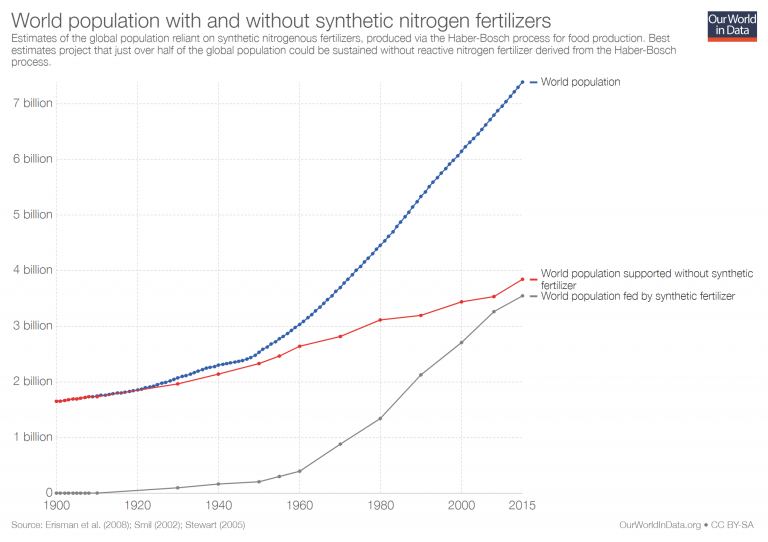Less than I would have thought.
It reads to me like this includes animal feed. I’d be curious to see an extrapolation on how many people the same production could potentially feed with resources & emissions optimized, as well as the minimum fertilized cropland needed to feed the current population with acreage-optimal diets.
there is a paper called something like “biophysical option space for feeding earth” that covers that to some extent, If i recall correctly, …its from years ago. if you find it and thats not the one let me know and i will try to figure out which one im talking about when i have time
Found it: https://www.nature.com/articles/ncomms11382
Very informative, thank you.
Have a look at the planetary boundaries framework, and the degree to which we have already overshot the limits for biogeochemical run-off. Really is very shocking.
It’s surprising how much of the world’s population is still reliant on subsistence agriculture. But make no mistake, we would be thoroughly fucked without mineral fertilisers.
Currently no emphasis is done on preventing runoff of surplus fertilizer and denitrification reaction pathways in the soil. Human nitrogen and phosphate is also typically wasted in the wastewater processing facilities, or is even dumped uncleared into the seas, causing eutrophication and dead zones, which further degrade the overfished sea as a source of human food.
With nitrogen and phosphate becoming scarcer and more expensive there will be probably ways to optimize current inefficiencies. But in general I would expect less agricultural output, pricing the most vulnerable out of the food market even in absence of climate-caused mass crop failure, possibly concerted breadbasket failure. Onset of which will be apparently sudden, despite many data points pointing to the possibility.
Yeah, my comment wasn’t about expectations or predictions. It was just a thought experiment.
What I expect is only very minor improvements while the market shrinks food access and the least advantaged starve, until the market breaks because too many laborers have died and/or rebelled. That seems inevitable.
This paper was shared on the sub recently. It looks like concurrent failures will be happening sooner than later. Livestock would become very expensive very quickly after maize and soy failures… which I consider the silver lining of the matter, I suppose.



